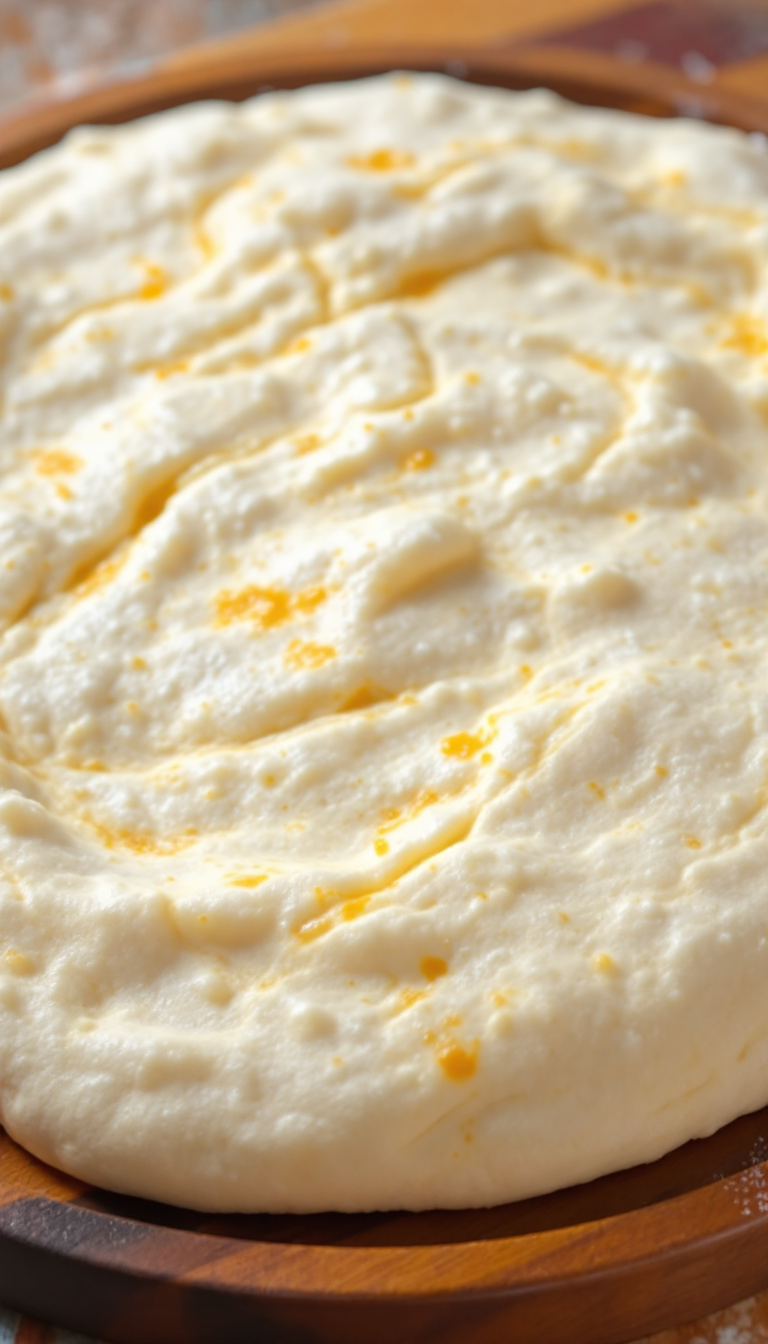Ah, pizza—the universal love language that speaks to our hearts and stomachs alike! I remember the first time I attempted this homemade pizza dough; it was a bit of a chaotic mess, flour everywhere, yet the aroma of yeast working its magic was utterly intoxicating. And while the world spins faster than a pizza dough in the hands of a skilled pizzaiolo, this easy recipe ensures your pizzas will always hit the mark—crispy, chewy, and oh-so-satisfying.
Steps
- In a large bowl, mix together 1 cup of flour, instant yeast, sugar, and salt. Optionally, add garlic powder and dried basil for extra flavor.
- Stir in olive oil and warm water with a wooden spoon until well combined. Gradually incorporate another cup of flour, and more if necessary, until the mixture forms a cohesive and elastic dough.
- Transfer the dough to a clean bowl brushed with olive oil, rolling it to coat in the oil. Cover with plastic wrap and let it rise in a warm place for 30 minutes until it doubles in size.
- Preheat your oven to 425°F (215°C). Once risen, gently deflate the dough and knead it on a floured surface until smooth, then shape it into a 12-inch circle.
- Place the dough on a parchment-lined pizza pan, forming a crust by pinching or folding the edges. Brush the entire surface with olive oil and poke holes in the center with a fork to prevent bubbling.
- Add your preferred toppings and bake in the preheated oven for 13-15 minutes until the toppings are golden brown. Slice and serve your homemade pizza.
Ingredients
- 2 to 2 ? cups all-purpose flour or bread flour, divided (250-295g)
- 1 packet instant yeast (2 ¼ teaspoons)
- 1 ½ teaspoons sugar
- ¾ teaspoon salt
- ? to ¼ teaspoon garlic powder and/or dried basil leaves (optional)
- 2 tablespoons olive oil, plus more for brushing
- ¾ cup warm water (175ml)
Nutritional Values
Calories: 1356kcal | Carbohydrates: 228g | Protein: 36g | Fat: 36g | Saturated Fat: 12g | Sodium: 1752mg | Potassium: 384mg | Fiber: 12g | Sugar: 12g | Calcium: 48mg | Iron: 12mg
FAQ
- What type of flour is recommended for homemade pizza dough?
- While many experts suggest using bread flour for the best homemade pizza, this recipe works well with all-purpose flour, which is more commonly available. Bread flour can provide a crispier crust, whereas all-purpose flour tends to result in a softer texture.
- Can I add flavors to the pizza dough?
- Yes, you can enhance the flavor of your pizza dough by incorporating a pinch of garlic powder or dried basil leaves. These are added before mixing in the oil and water. Dried oregano is another option, though personal preference plays a role in the herbs you choose.
- How should I stretch out my pizza dough?
- You can use either a rolling pin or your hands to stretch the dough. Some prefer using a rolling pin to create a circular shape, while others use their hands to flatten and stretch the dough. Pinching or folding the edges helps form a crust, and brushing the dough with olive oil before baking can prevent bubbles.
- How do I make homemade pizza with this dough?
- Once your pizza dough is ready, add your preferred toppings and bake in a preheated oven at 425°F (215°C) for about 15 minutes. It’s important to ensure your oven reaches the correct temperature before baking, and using an oven thermometer can be helpful.
- Can the pizza dough be prepared in advance?
- Yes, you can prepare the dough ahead of time. After allowing it to rise, deflate, and wrap it tightly to prevent drying out. It can be stored in the refrigerator for several days or frozen for up to a month.
Tips
- Choose Your Flour Wisely: If you prefer a softer pizza crust, stick with all-purpose flour. For a crispier texture, opt for bread flour. Both types work well, so select based on your desired crust texture.
- Enhance the Flavor: Consider adding a small amount of garlic powder or dried basil to the dough for extra flavor. This simple addition can elevate the taste of your pizza base.
- Proper Dough Handling: When shaping your dough, use either a rolling pin or your hands. If you enjoy a thicker crust, fold over the edges before baking, and make sure to poke holes in the dough’s center with a fork to prevent bubbling.
- Perfect Baking Conditions: Preheat your oven to 425°F (215°C) and ensure it reaches this temperature before baking your pizza. Using an oven thermometer can help verify the accuracy of your oven’s temperature.
Equipment
- Pizza Stone or Pizza Pan – For baking the pizza evenly and achieving a crispy crust.
- Pastry Brush – Useful for brushing olive oil over the dough.
- Oven Thermometer – To ensure your oven reaches the correct temperature for baking.
- Rolling Pin – For rolling out the dough, if you don’t prefer to use your hands.


